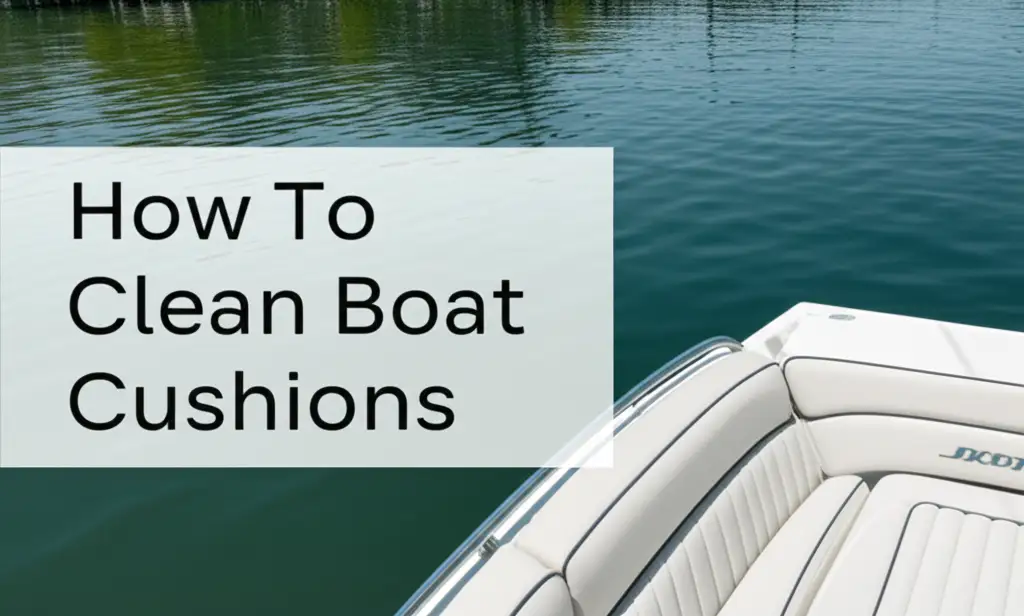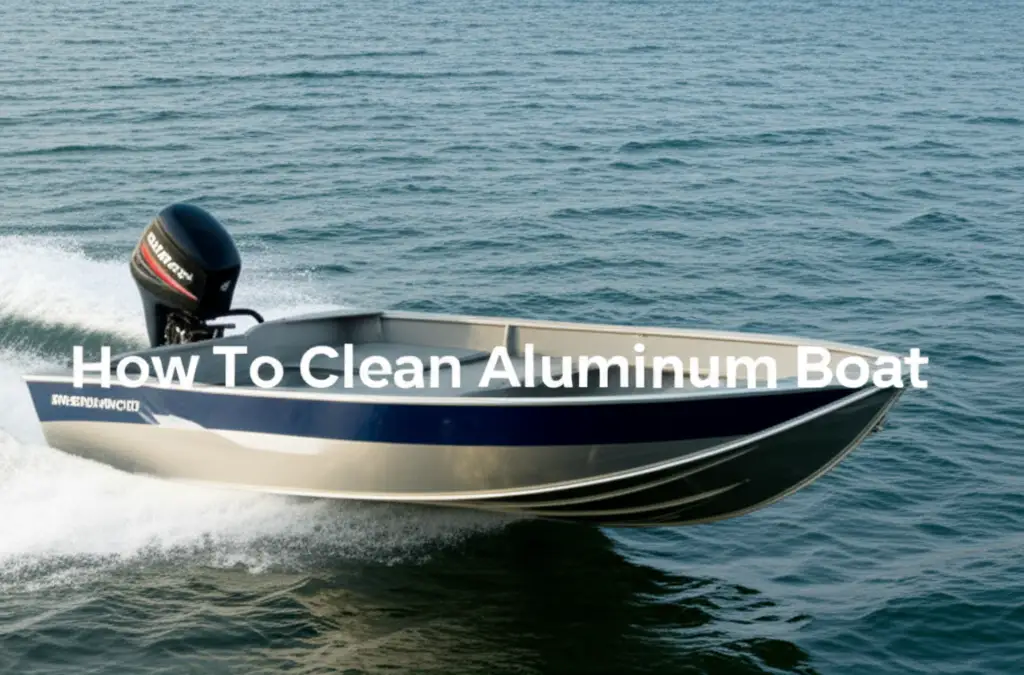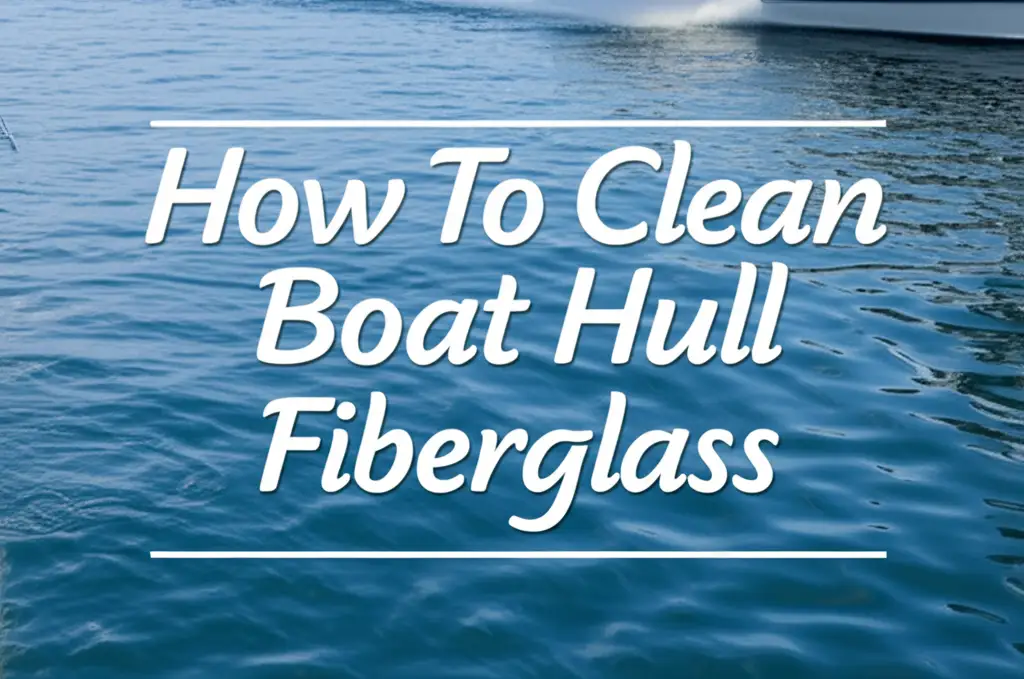· Boat Maintenance · 13 min read
How To Clean Boat Cushions

Refresh Your Ride: How To Clean Boat Cushions Effectively
The sun, salt, and water make boat cushions dirty. Over time, these elements cause grime, mildew, and stains to appear. Dirty cushions spoil the look and feel of your boat. Learning how to clean boat cushions helps keep your boat inviting. It also extends the life of your marine upholstery.
This guide provides simple steps for effective boat cushion cleaning. We will explore different cushion materials and the best ways to care for them. You will learn about essential supplies and how to tackle stubborn issues like mold. We also cover routine maintenance tips. You can keep your boat cushions looking new and fresh for many years.
Takeaway
- Identify your boat cushion material before cleaning.
- Use gentle cleaners and soft brushes for general dirt.
- Act quickly on stains to prevent them from setting.
- Address mold and mildew with specific solutions, then rinse thoroughly.
- Protect cushions with UV and water-resistant treatments after cleaning.
How do you effectively clean boat cushions?
You clean boat cushions effectively by first identifying the material. Then, you use appropriate cleaners and tools. You typically scrub with a soft brush, rinse thoroughly, and allow cushions to air dry completely. For tough issues like mold, use specialized products and follow up with protective measures.
Understanding Your Boat Cushion Materials
Knowing your boat cushion material is the first step in cleaning them. Boat cushions are often made from vinyl or marine fabric. Each material needs a specific cleaning approach. Using the wrong cleaner can damage the material.
Vinyl cushions are popular for their durability and water resistance. They are often found on boat seats and sun pads. Vinyl is a type of plastic that is easy to wipe clean. It resists most spills well. However, vinyl can become brittle or crack if not cared for correctly. Harsh chemicals can strip its protective layers.
Marine fabrics include materials like Sunbrella. These fabrics are designed for outdoor use. They resist fading, mold, and mildew. Sunbrella cushions often have removable covers. This makes them easier to clean. These fabrics still need regular cleaning to remove dirt and prevent buildup. They breathe better than vinyl, but can absorb liquids if not treated.
Always check the manufacturer’s label for cleaning instructions. Some cushions might have a special coating. This coating could react poorly to certain cleaners. My boat cushions are a mix of vinyl and Sunbrella. I learned early that treating them differently saves a lot of trouble. This careful approach helps avoid damage and keeps cushions looking good.
Essential Cleaning Supplies for Boat Cushions
Having the right supplies makes boat cushion cleaning simple. You do not need many items. Basic tools and gentle cleaners work best. Harsh chemicals can harm your cushions. They can also damage nearby boat surfaces.
Here is a list of supplies you should have:
- Soft-bristle brush: This helps scrub away dirt without scratching vinyl or fabric.
- Microfiber cloths: These are good for wiping surfaces and drying.
- Mild soap: Dish soap or a specialized marine upholstery cleaner works well. Avoid strong detergents.
- Buckets: You need two buckets, one for cleaning solution and one for rinse water.
- Hose or spray bottle: For rinsing off cleaners.
- Protective gloves: To keep your hands safe from cleaning solutions.
For specific problems like mold or mildew, you may need additional items. A solution of white vinegar and water can fight mildew. For stubborn mold, a dedicated mold remover for marine use is best. Remember to always test new cleaners on a hidden area first. This prevents accidental damage.
Using a product made for marine surfaces is often a good choice. These products are designed to be safe for boat materials. They also consider environmental impact. I always keep a kit ready with these essentials. It makes quick cleanups easy after a day on the water. Proper supplies ensure effective cleaning.
Step-by-Step Guide to General Boat Cushion Cleaning
Cleaning your boat cushions regularly prevents heavy buildup. This step-by-step guide helps you perform a general cleaning. It works for most boat cushion types. Always start with the gentlest method first. This protects your cushions and extends their life.
- Remove Loose Debris: Start by vacuuming or brushing off loose dirt, crumbs, and sand. Use a shop vacuum for efficiency. This prevents dirt from turning into mud during wet cleaning. I usually shake them out first before vacuuming.
- Prepare Cleaning Solution: Mix a small amount of mild soap with warm water in a bucket. Use about one ounce of soap per gallon of water. For vinyl, a specialized marine cleaner can be used. For fabric, follow the cleaner’s instructions.
- Test in an Inconspicuous Area: Apply the solution to a small, hidden spot. Wait a few minutes. Check for any discoloration or damage. If the cushion looks fine, proceed. This step is crucial for new cleaning products.
- Apply and Scrub: Dip your soft-bristle brush into the solution. Gently scrub the entire surface of the cushion. Work in small sections. Apply light pressure to lift dirt. Do not saturate fabric cushions too much. For vinyl boat seats, a slightly firmer scrub is okay.
- Rinse Thoroughly: Use a hose or a spray bottle filled with clean water to rinse the cushions. Make sure all soap residue is gone. Soap left behind can attract more dirt or cause stains. For fabric cushions, try to rinse without soaking the foam inside.
- Dry Completely: Allow the cushions to air dry completely. Position them upright or on their sides to promote airflow. Never store wet cushions. Wet cushions are a breeding ground for mold and mildew. If possible, let them dry in the sun, but not for too long, especially vinyl, as intense heat can damage it.
This routine cleaning keeps cushions looking fresh. It also prepares them for stain or mold treatments if needed. I find doing this every few weeks helps maintain their condition. It is a simple process that makes a big difference.
Tackling Stubborn Stains on Boat Cushions
Stubborn stains need targeted cleaning methods. Different stains require different approaches. Acting quickly improves your chances of complete removal. Always identify the stain type before you start.
Here are common stain types and how to remove them:
- Food and Drink Stains:
- Blot fresh spills immediately with a clean cloth. Do not rub, as this spreads the stain.
- Mix mild soap with water. Apply to the stain. Gently scrub with a soft brush.
- Rinse with clean water. Repeat if necessary.
- Grease and Oil Stains:
- Sprinkle cornstarch or baking soda on the stain to absorb oil. Let it sit for 15-30 minutes.
- Brush off the powder.
- Apply a degreasing cleaner designed for marine use. Scrub gently.
- Rinse thoroughly with clean water.
- Ink Stains:
- Apply rubbing alcohol to a clean cloth. Blot the ink stain. Work from the outside in.
- Do not rub, as this can spread the ink.
- Follow up with a mild soap and water solution.
- Rinse and dry.
- Sunscreen and Lotion Stains:
- These stains can be oily and tough.
- Use a mild degreaser or a product specifically for sunscreen stains on marine vinyl.
- Apply, scrub gently, and rinse well. Some Sunbrella chair cushions may also face this issue, so checking the material is key.
Always test any stain remover on a hidden area first. Some chemicals can bleach or damage your cushions. For deep-set stains, multiple applications may be necessary. Patience is key when dealing with tough stains. I once had a tough grease stain on my vinyl cushion. It took a few tries, but a marine degreaser eventually lifted it.
Removing Mold and Mildew from Boat Cushions
Mold and mildew are common problems for boat cushions. The damp, warm marine environment encourages their growth. They appear as black spots or fuzzy patches. These growths not only look bad but can also damage your cushions and pose health risks. Removing them quickly is important.
Here is how to effectively remove mold and mildew:
- Prepare the Area: Move cushions to a well-ventilated spot. Wear gloves and eye protection. You might also wear a mask to avoid inhaling mold spores.
- Choose Your Solution:
- Mildew Stain Remover: For light mildew on outdoor cushions, a mixture of equal parts white vinegar and water often works. Apply with a spray bottle. For tougher mildew, consider a specialized mildew cleaner for fabrics or vinyl.
- Bleach Solution (Use with Caution): For severe mold on white or light-colored vinyl, a diluted bleach solution (1 part bleach to 10 parts water) can be effective. Never use bleach on colored fabrics or marine canvas as it can cause irreversible discoloration. Always test on a small, hidden area first. This is crucial if you are wondering how to clean mold off boat seats.
- Apply the Solution: Spray or apply the chosen solution directly onto the moldy areas. Let it sit for 10-15 minutes. This gives the solution time to penetrate and kill the mold.
- Scrub Gently: Use a soft-bristle brush to scrub the affected areas. Apply moderate pressure. The mold should start to lift away. For fabric, scrub in the direction of the weave.
- Rinse Thoroughly: Rinse the cushions completely with fresh water. Make sure all cleaning solution is removed. Residue can attract more dirt or damage the material over time. This also stops mold from returning. You want to avoid leaving any cleaning agents behind.
- Dry Completely: This is the most important step for preventing mold recurrence. Allow the cushions to dry completely in the sun or a well-ventilated area. Do not put them back on the boat or in storage while damp. They need excellent airflow. If needed, use fans to speed up drying.
I once found a lot of mold on my boat cushions after a long winter. Using a specific marine mold remover, followed by thorough drying, made them look new again. For persistent mildew on outdoor cushions, you might find more tips on how to clean mildew off outdoor cushions. Prevention is easier than removal. Regular cleaning and proper drying stop mold from growing.
Deep Cleaning and Restoration for Boat Cushions
Sometimes, boat cushions need more than a simple clean. Deep cleaning helps restore their appearance. This is especially true for older cushions or those with heavy grime. Restoration brings back the original vibrancy. It also adds a layer of protection.
For vinyl cushions, deep cleaning involves special conditioners. After a thorough scrub and rinse, apply a marine vinyl cleaner and conditioner. This product cleans deeper. It also nourishes the vinyl. It helps prevent cracking and fading from UV exposure. Apply with a soft cloth. Then, buff lightly. This makes the vinyl supple and shiny.
For marine fabric cushions, deep cleaning might involve a fabric-specific cleaner. Some cleaners are designed to lift ingrained dirt. If cushion covers are removable, consider machine washing them according to manufacturer instructions. Always use a gentle cycle with cold water. Allow them to air dry fully. Do not use a dryer, as heat can shrink or damage the fabric. This is similar to caring for Sunbrella chair cushions.
After deep cleaning, consider applying a UV protectant. This spray creates a barrier against sun damage. It prevents fading and degradation. Many products offer water repellency as well. This helps shed water and resist future staining. Regular application extends the life and look of your cushions significantly.
Deep cleaning is not just about aesthetics. It also preserves the material. It prevents breakdown caused by environmental factors. My boat cushions benefit greatly from a deep clean once or twice a season. They stay softer, cleaner, and look much better. It is an investment in your boat’s comfort and appearance.
Maintaining Your Boat Cushions for Lasting Freshness
Keeping your boat cushions clean is an ongoing task. Regular maintenance prevents major cleaning jobs. It also ensures your cushions last longer. A few simple habits make a big difference.
Here are key maintenance tips:
- Wipe Down Regularly: After each use, quickly wipe down cushions. Use a damp cloth to remove salt spray, dirt, and minor spills. This prevents grime from setting in.
- Rinse After Saltwater Exposure: If your cushions get wet with saltwater, rinse them with fresh water. Salt can be corrosive over time and leave crystal residue.
- Dry Thoroughly: Always ensure cushions are completely dry before covering or storing your boat. Moisture creates a breeding ground for mold and mildew. Elevate cushions for better airflow if needed.
- Use Cushion Covers: When the boat is not in use, cover your cushions. Custom-fit covers protect against sun, rain, and bird droppings. This extends their life significantly.
- Apply UV Protectant: Regularly apply a UV protectant spray, especially on vinyl cushions. Sun exposure causes fading and cracking. These sprays block harmful UV rays. Reapply every few months or as product instructions suggest.
- Store Properly Off-Season: During the off-season, remove cushions from the boat if possible. Store them in a cool, dry, well-ventilated area. This prevents extreme temperature damage and rodent issues. My boat has cushion storage in the garage during winter. This keeps them clean and safe.
Good maintenance reduces the need for harsh cleaners. It keeps your cushions looking new for years. This also protects your investment. Your boat will always be ready for your next adventure. Taking care of boat cushions is a simple step towards a more enjoyable boating experience.
Frequently Asked Questions
How often should I clean boat cushions?
General boat cushions need cleaning after every use, especially for spills or saltwater exposure. A thorough cleaning, removing dirt and light stains, is ideal monthly during boating season. Deep cleaning, including mold prevention and UV protection, should happen at least once or twice a year, or before storing the boat for the off-season. This prevents buildup and extends cushion life.
Can I machine wash boat cushion covers?
You can machine wash some boat cushion covers. Check the manufacturer’s care tag first. Most marine fabric covers, like Sunbrella, are machine washable on a gentle cycle with cold water. Always use a mild detergent. Do not use bleach unless specified. Air dry covers completely; never use a dryer, as it can cause shrinking or damage.
What cleaners should I avoid on boat cushions?
Avoid harsh chemical cleaners, abrasive scrubs, and products containing ammonia, bleach (on colored fabrics), or petroleum distillates. These can damage vinyl, strip protective coatings, or fade fabrics. Do not use strong solvents like acetone or paint thinner. Always opt for mild soap, specialized marine cleaners, or natural solutions like vinegar, and test in an inconspicuous area first.
How do I prevent mold on boat cushions?
Prevent mold on boat cushions by ensuring they dry completely after every use. Do not cover or store wet cushions. Provide good air circulation to cushions. Apply a marine fabric protectant that repels water and inhibits mold growth. Store cushions in a dry, well-ventilated area during prolonged storage or off-season. Regular wiping down helps stop mold spores from settling.
Can I use a pressure washer on boat cushions?
You should not use a high-pressure washer directly on boat cushions. The strong force can damage the stitching, tear the fabric, or compromise the foam core. It can also force water deep into the cushion, making it hard to dry and leading to mold. A regular garden hose with a spray nozzle provides enough pressure for rinsing.
Conclusion
Keeping your boat cushions clean is a rewarding task. It ensures your boat stays comfortable and inviting. We covered various types of cushions and the best ways to care for them. From general cleaning to tackling stubborn stains and fighting mold, you now have the knowledge. Regularly cleaning boat cushions is important. It not only improves appearance but also extends their lifespan.
Always remember to use the right supplies and gentle methods. This prevents damage and preserves your investment. My experience has shown me that consistent care pays off. Your boat cushions will look great for many seasons. Take these tips to the water and enjoy your pristine boat. Start your boat cushion cleaning today and see the difference.
- boat cushion cleaning
- marine upholstery care
- vinyl boat seat cleaning
- Sunbrella boat cushions
- mold removal boat
- mildew cleaning cushions
- boat interior cleaning




